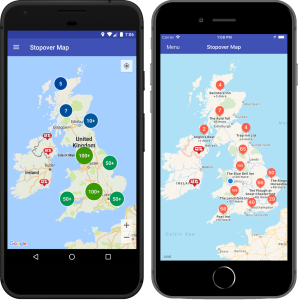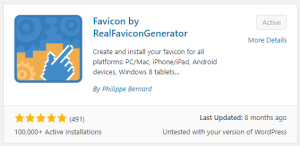-
Online Tool of the Month – MockUPhone.com

While preparing my previous post I needed to generate some mobile device mockups showing my Xamarin.Forms app running in Android and iOS.
In the past I have normally cobbled these together using Paint.Net, a device bezel image and overlaying the screenshot onto it. Not pretty but it worked and looked fine.
However, the bezel images I had were rather old and I wanted to freshen things up a bit so went off in search of some new ones – only to come across MockUPhone.com.
Read more -
First Xamarin.Forms app goes live in both App Stores
A while ago I eluded to the fact that I was revisiting Xamarin.Forms for cross platform mobile development – previous projects had used the ‘native’ Xamarin.Android and Xamarin.IOS toolkit.
I was interested to see how far Xamarin.Forms had come since my last encounter where I found it lacking in some critical functionality that was required for the project at hand – primarily when dealing with Maps.
When I was approached by a user of my FillLPG application to write something along a very similar line, i.e. a number of points of interest displayed on a map with clickable markers to display more details, for both Android and iOS I wondered whether Xamarin.Forms had matured enough to do the job.
Read more -
Online Tool of the Month – webhook.site
If you’ve ever worked with a third party API that uses Webhooks you will appreciate the power and flexibility that they provide. Instead of having to poll for updates yourself you can rely on the API to call you instead.
I first came across webhooks when developing a web application that implemented Stripe as it’s payment gateway for monthly/annual subscription payments.
In this instance the webhooks would fire when specific events occurred; e.g.
- Payment was successful
- Payment failed (and will be retried)
- Subscription Cancelled (manually or after repeated, automated attempts for payment have failed)
Long polling for this information would be a nightmare and having the webhook contact an endpoint on your API removes this headache – but does introduce another.
Read more -
Online Tool of the Month – realfavicongenerator.net
 Following the migration of this website to WordPress I installed the ‘redirection’ plugin in an effort to handle the difference in the url structure used by Squarespace (my previous host/platform). This plugin allows me to redirect users using the old Url to the correct content and also see any 404 errors for resources I may have missed.
Following the migration of this website to WordPress I installed the ‘redirection’ plugin in an effort to handle the difference in the url structure used by Squarespace (my previous host/platform). This plugin allows me to redirect users using the old Url to the correct content and also see any 404 errors for resources I may have missed.While reviewing this 404 log I noticed a few rather odd entries, such as
- apple-touch-icon-precomposed.png and
- apple-touch-icon.png.
Knowing that I never had such content on the site before I did a bit of Googling and found that these are favicons (the little square logos that reside on your browser tabs) that Apple’s Safari browser will attempt to load along with your page.Now that I knew what the problem was, how do i fix it? I mean, I had a favicon on the site – why couldn’t Safari just use that one?
Read more -
Online Tool(s) of the Month – For Finding Lat/Lng
I’ve recently been engaged by a client to write the mobile applications for his website (more on that in later posts) which plots ‘points of interest’ on a map. That probably sounds a little familiar as I have already developed the FillLPG for Android application which displays the location of LPG stations around the UK – and increasingly into Europe.
Working with mapping applications is always a challenge, but an enjoyable one for me as I find maps such an engaging medium. One recurring challenge for me is that I don’t speak ‘Latitude and Longitude’ so when I need to test my code, e.g. load the map for a certain location and perform a ‘nearby’ search, I have to determine some suitable coordinates.
Read more
